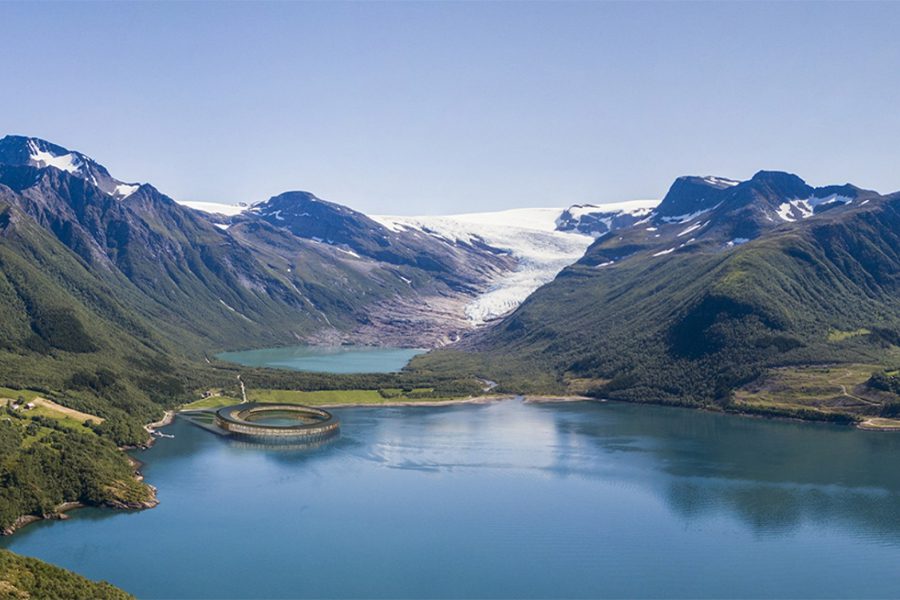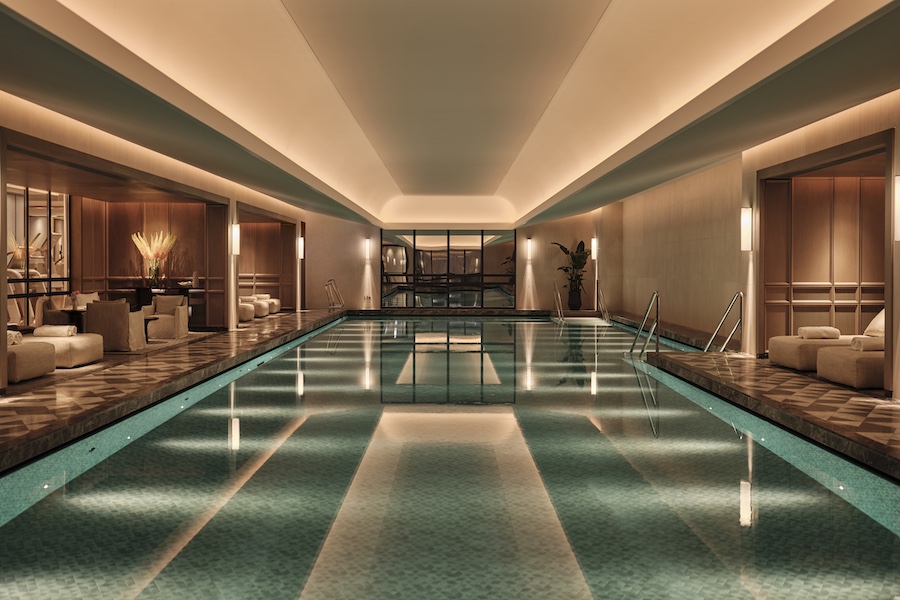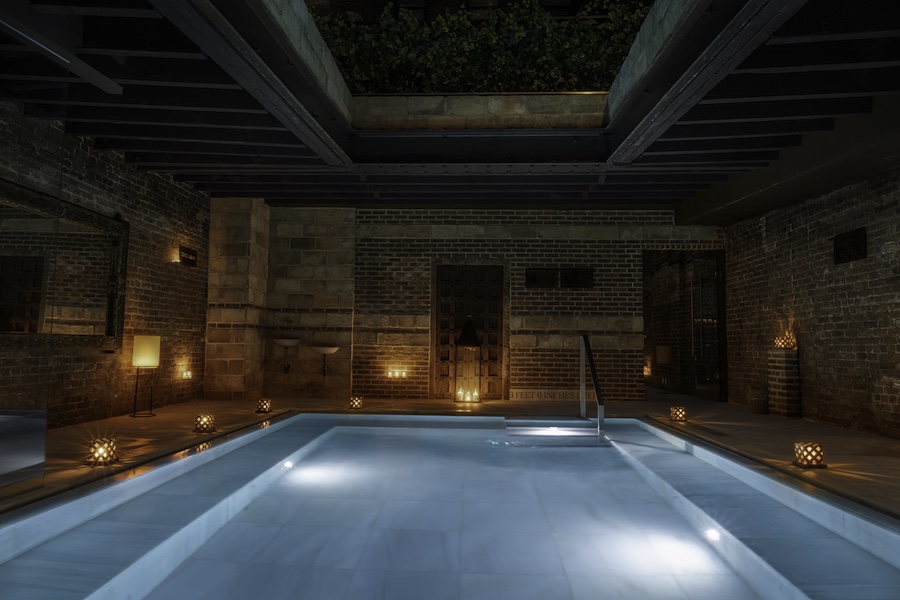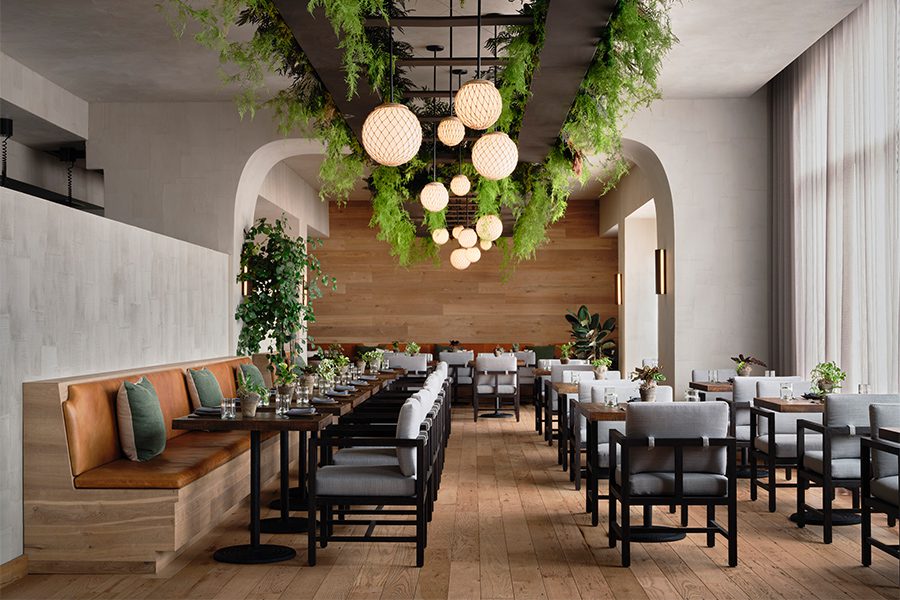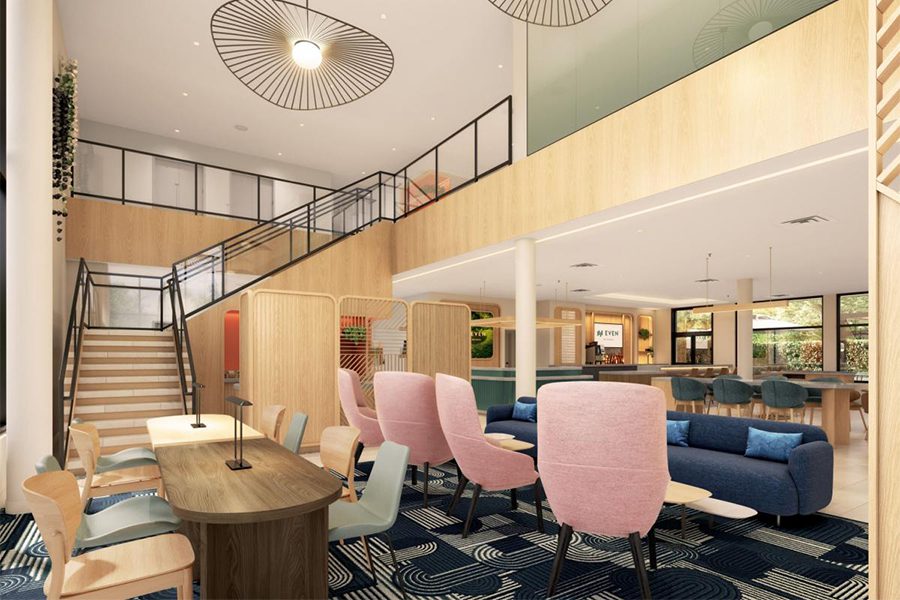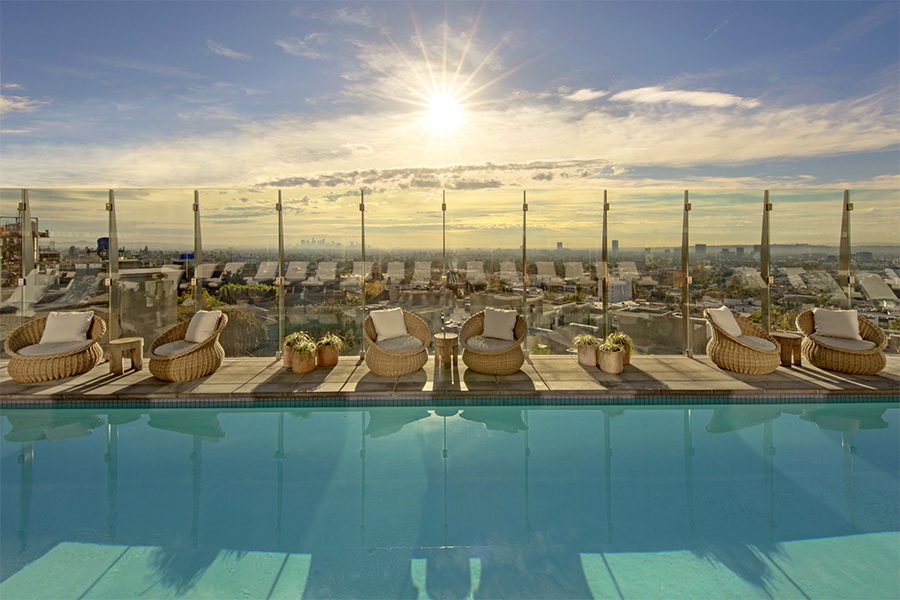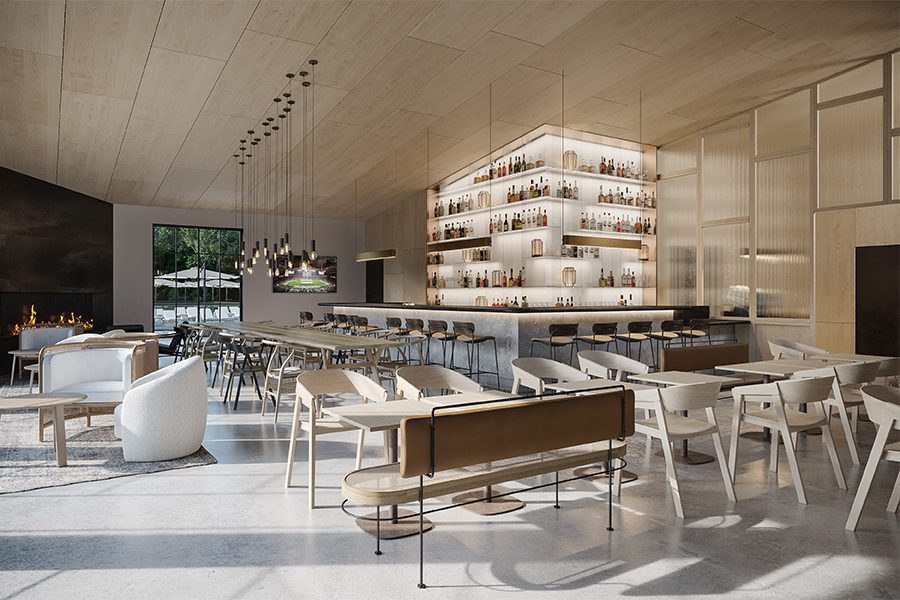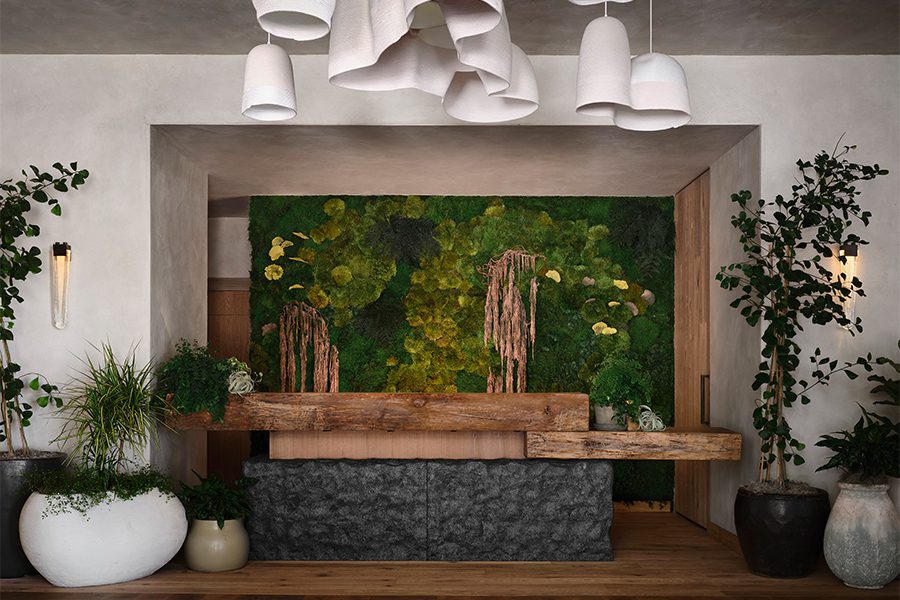Jordan Bem was sitting with his sister on a Long Island beach in New York when he “realized that if you didn’t have friends here, staying in a hotel would be extremely expensive during the summer,” he recalls. “Wouldn’t it be neat to have a hotel that’s always in the right place at the right time?”
That’s what prompted the then real estate developer to launch the nomadic hospitality solution Moliving in 2017. Later this year, the brand will debut Moliving at Hurley House, its flagship property in New York’s Hudson Valley. The energy-positive resort, comprising 60 mobile suites crafted from materials like recycled steel, is designed to be quickly assembled and dismantled without a trace, greatly reducing energy consumption. “We can pop up a hotel faster than anyone else because they are not permanent infrastructure,” Bem explains.
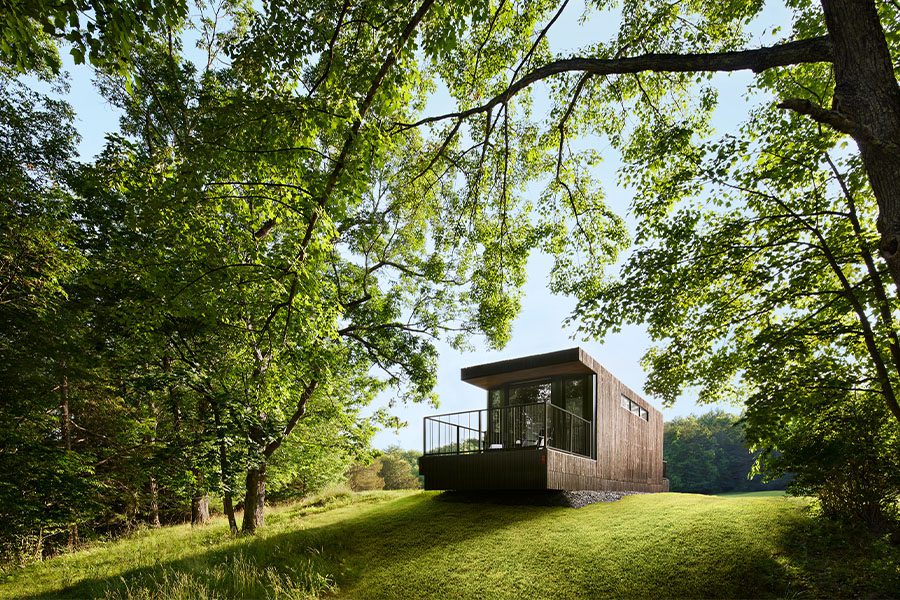
Hurley House, Moliving’s first hotel, will be situated in the scenic Hudson Valley, New York
Major hotel brands are also taking their own daring, albeit realistic, steps, and Moliving, as well as other new glamping brands, signifies the kind of bold thinking that is necessary in an industry where sustainability is becoming ever more important to users and designers alike. According to information technology company Accenture, 58 percent of consumers are thinking more about sustainability since the onset of the pandemic. Eighty-six percent of them want to travel more sustainably, yet only half of that number are managing to do so. The onus falls on hotels then to integrate environmentally conscious measures into their properties, whether it’s by shunning plastic key cards for digital room entry, embracing large-format bathroom amenities, or, in the cases of the Park Hyatt Hyderabad in India and the Andaz Costa Rica Resort at Peninsula Papagayo, bottling its own water to reduce single-use plastics.
Sustainability “has evolved from being a buzzword to being an approach that has to have substantive meaning behind it,” says Corinne Hanson, corporate director of sustainability and impact at SH Hotels & Resorts, which includes the 100 percent certified CarbonNeutral 1 Hotels brand. “It goes beyond having a recycling program; sustainability needs to be a part of the fabric of a brand and its practices.”
Taking the Initiative
“As one of the world’s largest hotel companies, Hilton has a responsibility to protect our communities and our planet, so the destinations where we operate can remain vibrant and resilient for generations of travelers to come,” says Jean Garris Hand, vice president of global environmental, social, and governance (ESG) at Hilton. In 2018, Hilton unveiled Travel with Purpose, its ESG program. That same year, the company became the first in the industry to set science-based targets to reduce greenhouse gas emissions. To reflect shifting climate science developments, Hilton now has new environmental and social impact goals, including increasing its emissions intensity reduction target to 75 percent across its managed estate and 56 percent across its franchised products.
Through LightStay, its proprietary ESG management platform, Hilton can track energy, emissions, water, waste, and social impact throughout its 18 brands operating around the world. At the end of 2021, LightStay data indicated that Hilton reduced carbon emissions intensity across its portfolio by 43 percent compared to its 2008 baseline. “Increasing efficiency also cuts operational costs,” explains Garris Hand. “In fact, this efficiency has saved our properties well over $1 billion in utility costs.”

Park Hyatt Chicago’s 1,600-square-foot presidential suite features calming interiors by Anderson/Miller
In 2021, Hyatt Hotels & Resorts launched World of Care, a global ESG platform “designed to address today’s environmental challenges that are priorities for guests and customers and to enact meaningful change within our industry. As part of this platform, we introduced a new environmental framework and commitments, focusing on climate change and water conservation, waste and circularity, responsible sourcing, and thriving destinations,” says Margaret Egan, executive vice president and general counsel at Hyatt. The company has also received approval from the Science Based Targets initiative (SBTi) based on its 2030 science-based targets to cut back on greenhouse emissions.
Sustainability has long been a centerpiece of IHG Hotels & Resorts. “We’re proud to have made some important progress in our responsible business efforts over the years,” says chief sustainability officer Catherine Dolton. “At the same time, when you take a step back, all that’s taken place over the past couple of years has elevated the importance of purpose, giving new meaning to the potential for businesses to affect positive change, and in fact, highlighting the growing expectation for them to do just that.”
For IHG that has translated to evolving its corporate purpose from True Hospitality for Everyone to True Hospitality for Good “with commitment from the top down,” Dolton says. Last year, the company also rolled out Journey to Tomorrow, a 10-year responsible business plan that prioritizes five key areas—people, communities, carbon and energy, waste, and water. “Within these pillars are lofty commitments that we’ve set out for ourselves, on a global scale, which in fact requires that we think about the role that sustainability can play across all facets of our operations, including the design of our hotels,” Dolton adds.
By Design
Once Moliving makes its mark on the Hudson Valley, Bem plans to open five more modular properties between the end of 2023 and the beginning of 2025. “The footprint will be exactly the same—400-square-foot units with two independent decks,” he says, but the interiors, handled in-house, will draw from the location. Although Moliving outposts will be connected to the grid, they are engineered to harvest enough solar energy so they can be fully independent from it. “We will be generating more energy than we will be consuming onsite,” he explains.
Energy-efficient properties are top of mind for the big brands, too. Garris Hand singles out the recently opened Hotel Marcel in New Haven, Connecticut, part of the Tapestry Collection by Hilton. Designed by New York studio Dutch East Design, it is the first net-zero and Passive House-certified hotel in the country, and one of fewer than a dozen to have received LEED Platinum certification. Along with the renewable solar power sources that generate electricity throughout the hotel, it has a power-over-ethernet lighting system that reduces energy use by more than 30 percent and features “extensive upgrades such as triple-glazed windows to enhance interior temperature control and air quality, resulting in the building using significantly less energy per square foot than most hotels,” says Garris Hand.
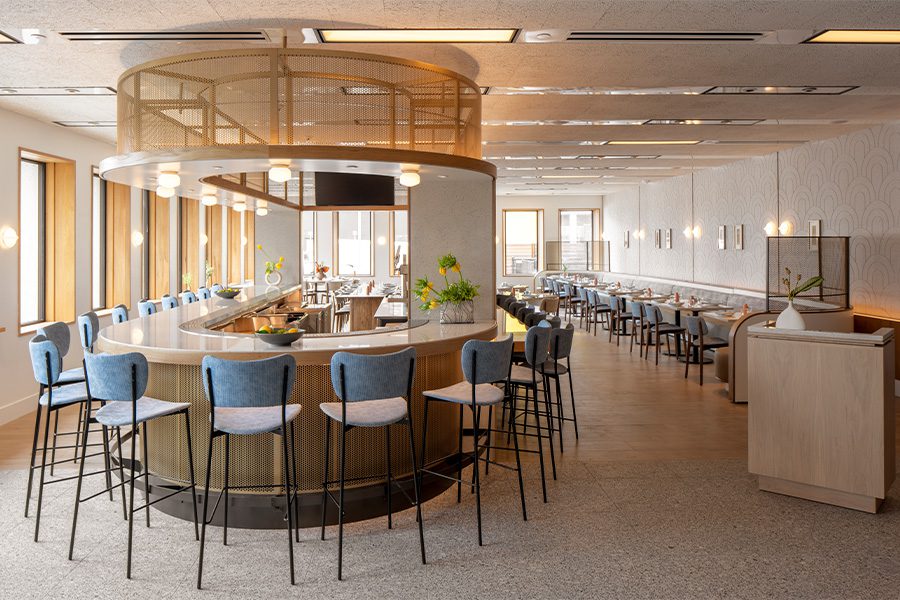
Inviting tones swath BLDG, Hotel Marcel’s ground floor restaurant and bar by Dutch East Design
Like Hotel Marcel, the recently revamped Park Hyatt Chicago’s guestrooms now flaunt triple-pane windows, and Egan says the extra layers of glass are “drastically reducing energy transfer.” Even more impressive is the Hyatt Regency San Francisco Downtown SOMA, the first custom branded hotel renovation to earn a MindClick Leader score for environmentally and socially responsible interior design. “Over 95 percent of the products purchased by square footage, including flooring, fabrics, seating, and outdoor furnishings, are recognized leaders in the MindClick Sustainability Assessment Program, based on their reduced carbon footprint and use of recycled, sustainably harvested, or rapidly renewable materials,” points out Egan.
As Nature Intended
For some brands, sustainability is intertwined with the location of the hotel. At Six Senses Hotels Resorts Spas, part of the IHG portfolio, the process begins with the development team seeking out environmental impact assessment reports for all new projects. “They offer a wealth of information on our local wildlife and communities. Then throughout design and construction we have requirements built into our standards for architecture, interior design, FF&E, engineering, and landscaping,” says Six Senses’ vice president of sustainability Jeffery Smith.
In 2024, Six Senses will open an off-grid hotel in Svart, Norway, atop the Holandsfjorden fjord on the Helgeland coastline. “It aims to create positive disruption in the hotel world, with incredibly ambitious goals on becoming energy positive and carbon negative. The carbon accounting for this project goes beyond the standard hotel operations and includes embodied carbon and emissions resulting from construction and building materials,” explains Smith.
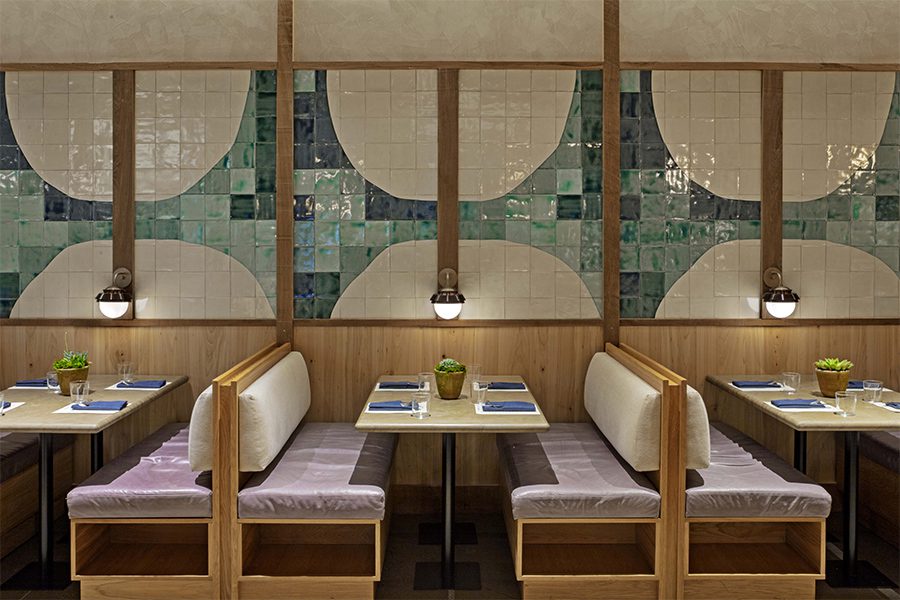
Glazed tiles accent the walls of 1 Hotel West Hollywood’s 1 Kitchen, designed by AvroKO
Hanson says that each 1 Hotels property “represents the natural environment of the location where it resides.” 1 West Hollywood, for instance, is the first LEED-EBOM-certified hotel in LA under the v4 rating system and has an Energy Star score of 95. “Within the property, we used 75 tons of urban lumber—wood recovered from local fallen trees to create planters and other design elements, keeping these trees out of the waste stream,” she adds. The recently opened 1 Hotel San Francisco also showcases a lobby floor crafted from lumber that once graced historic barns and industrial buildings as well as sustainably sourced redwood salvaged from the original San Francisco Bay Bridge that now dresses elevator landings and corridors.
Although “sustainability is our guiding light,” Hanson points out that dedication can be challenging. “When 1 Hotel South Beach opened in 2015, there was only one mattress brand that met all qualifications,” but now, she adds, “there are many on the market, and we have to constantly update property and brand practices.”
Effecting Change
Moliving, “a marriage between the mobility sector and ultra-luxury space,” as Bem describes it, was originally built for people like him, who love hiking and road bikes “but don’t want to stay in a tent. What we created is a 5-Star experience, which in turn, reconnects you with nature.” The Hudson Valley outpost, surrounded by two lakes and eight miles of trails, will also provide a slate of activities that are pivotal to the brand’s mission of deepening guests’ relationships with the outdoors.
Hyatt’s luxe Alila brand incorporates design elements that pull from the natural, physical, and cultural attributes of all its locations while simultaneously adapting to EarthCheck operating standards. Alila Villas Uluwatu in Bali, for instance, has a zero-waste policy and through its onsite sustainability lab, the property reuses, recycles, and upcycles approximately 850 kilograms of waste per month, transforming coffee grounds into compost, recycling bottles into glasses, and upcycling tires into sandals. Food waste is also converted into organic fertilizer and used on the rooftop garden of the Grand Hyatt Singapore, which saved 10,000 kilograms of food from March to December of last year.

Singapore-based firm WOHA conceived Alila Uluwatu in Bali, perched on a limestone cliff
But sustainability doesn’t have to be limited to the high-end market. Dolton recognizes that although its measures are front and center at IHG brands such as Six Senses and the upscale voco, “we’d like our guests to feel like they have the assurances that our hotels are operating sustainably no matter where they stay,” she says. Take the wellness-focused EVEN brand, which is debuting a new design prototype that features a palette and textures that are naturally calming. IHG is also concentrating on interventions to existing components like smart thermostats, heat pump technology, LED lighting, and high-efficiency hot water fixtures coupled with a bigger-picture goal of new-build hotels operating with low or zero carbon by 2030.
“When we think about impact, there’s tremendous opportunity to effect change at scale within our mainstream brands given the sheer size of those portfolios,” she says, pointing to Holiday Inn, Holiday Inn Express, avid hotels, Staybridge Suites, and Candlewood Suites. Removing small toiletry bottles alone, Dolton adds, is “expected to save at least 850 tons of plastic annually—the equivalent weight of five fully-grown blue whales or 70 double-decker London buses.”
This article originally appeared in HD’s October 2022 issue.

